I try to acquire some useful knowledge as often as I can, and this week I learned a new trick.
I’ve been visiting The Criterion Contraption lately, reading Matthew Dessem’s lengthy reviews of Criterion Collection DVDs, as he views them in the chronological order of their release. His lively text is accompanied by still captures from the films, and the still shots are impeccably chosen, always illustrating a point in the writing. I’ve tried to capture stills from DVDs, too, but have had no luck using my own vast ingenuity. (Vast, I tell you!) Anyway, I spent a couple of hours traversing the internets, and found some information that allowed me to capture stills without downloading any new software. Shhh, here’s the secret…right here.
So, I thought I’d play a game that combines my newly-found techie talent with my love of lists. Here are five of my favorite facial expressions that I’ve seen in the movies:
1. Harpo Marx in Duck Soup (1933).
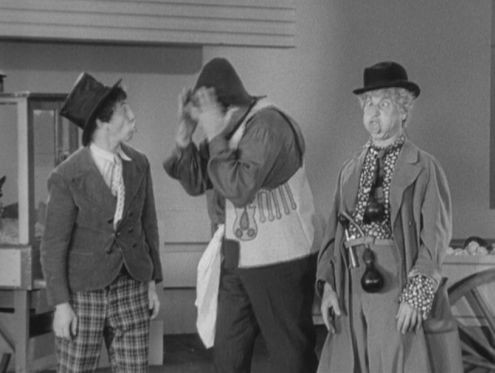
This has always been a favorite facial expression of mine, one that I once was able to mimic. I call it the “inflatable elephant face.” These days all I have to do is cross my eyes and I’m already rounding third. Harpo used this bizarre facial morph to disarm people. Here he’s disarming Edgar Kennedy, with an able assist from Chico (who does the inflatable elephant quite well, too). I believe that Harpo makes this face in every Marx Brothers feature at least once.
2. Donald O’Connor in Singin’ in the Rain (1952).
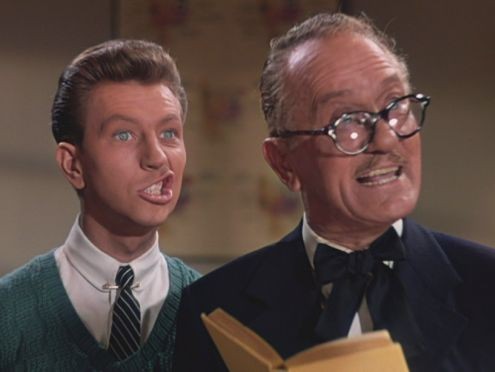
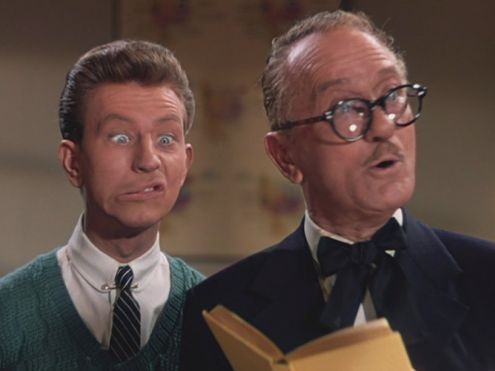
This series of faces is not too far removed from Harpo’s inflatable elephant face. It is from the “Moses Supposes” musical number, in which O’Connor and Gene Kelly are learning the finer points of English diction to ease the transition from silent pictures to talkies. I love the subvervise nature of these. O’Connor is mimicking the diction coach’s face as he pronounces the lesson, and stops making the face whenever the coach turns toward him.
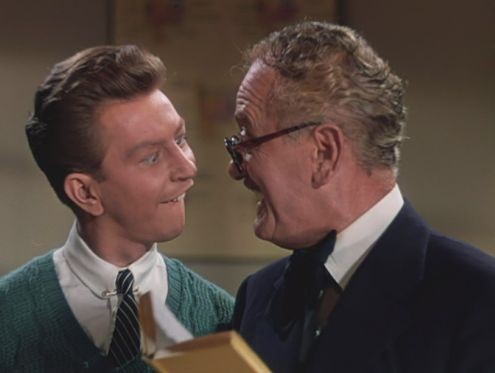
As you can see, the diction coach comes face to face with O’Connor’s antics in the end.
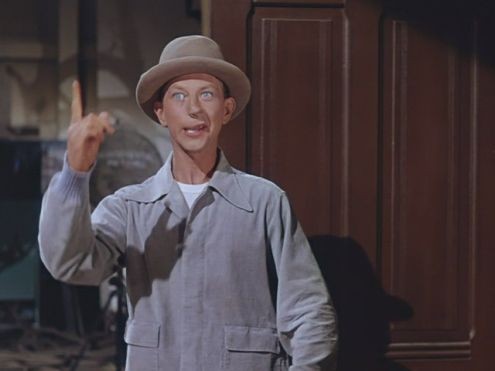
Running a close second to the Moses face is this disfiguring mug from the same movie. It is from O’Connor’s “Make ‘Em Laugh” number, and displays his facial wreckage after he slams himself face-first into a brick wall. It looks like a special effect, as if the prop man had tied fishing line to the end of his nose and was tugging at it from off-camera. But I have read that it is a true Donald O’Connor facial expression.
3. Dorothy Comingore in Citizen Kane (1941).
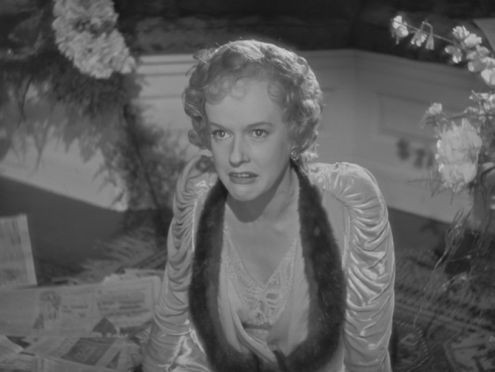
SUSAN:
You’re awful funny, aren’t you? But I can tell you one thing you’re not gonna keep on being funny about. That’s my singing. I’m through. I’ve never wanted to in the first place.KANE:
You will continue with your singing, Susan. I don’t propose to have myself made ridiculous.
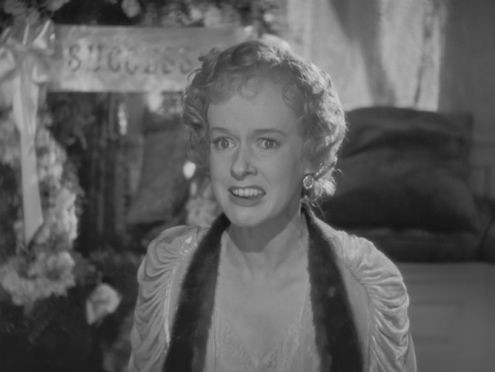
SUSAN:
You don’t propose to have yourself made ridiculous. What about me? I’m the one who’s gotta do the singing. I’m the one who gets the raspberries. Why don’t you let me alone?
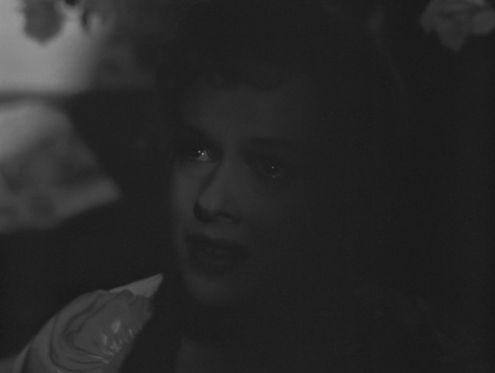
KANE:
My reasons satisfy me, Susan! You seem unable to understand them. I will not tell them to you again. You will continue with your singing.
Susan Alexander Kane is a pitiable character, but also just plain annoying. Infuriatingly so. With her whining, hyper-shrill screaming voice, and constant yack yack yack, it is easy to see why Charles Foster Kane was driven nuts by her. But he also saw her as someone he could control and possess, and by the end of this scene, Susan is defeated by his authority (visually represented by his towering shadow). This was the closest she ever came to winning a battle with Kane, until she learned that the best offense was just to leave. I love her curled lip when she is screaming at him; it’s way over-the-top, but effective as hell, and you can practically feel her hatred.
4. Mark Ruffalo and Rory Culkin in You Can Count On Me (2000).
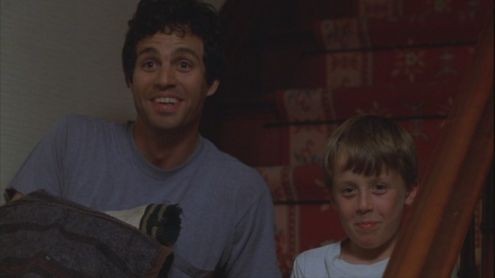
This one suffers a little when it is captured in a still frame, as Ruffalo’s and Culkin’s faces go through a series of spasms as they try to speak seriously without breaking into excitable laughter. They have just been caught sneaking into the house late at night by Culkin’s mother (and Ruffalo’s sister), played by Laura Linney. While on-the-spot improvising a series of completely implausible excuses to explain why the boy is still awake so late at night, the uncle and nephew keep looking at each other and cracking each other up. This was one of the more light-hearted moments in a very serious and emotional drama (and one of my absolute favorite movies).
5. Charlie Chaplin in City Lights (1931)
and Woody Allen in Manhattan (1979).
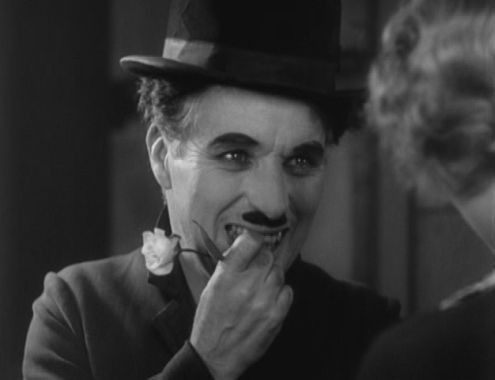

That shot of Chaplin is a cinema classic, of course, and is the last shot of the film. City Lights ends completely open-ended, with the possibility of a happily-ever-after future almost as palpable in the viewer’s mind as it apparently is in Chaplin’s.
I don’t know this for certain, but my feeling has always been that Woody Allen borrowed inspiration from that scene in City Lights for his closing scene in Manhattan. Note the love interest in the right foreground, and the street behind him while he faces the camera.
Woody’s character is hoping – against reasonable odds – for a happily romantic future with the 18-year-old Mariel Hemingway character. Knowing what happens six months after this scene is unnecessary. It is enough to know that the Chaplin and Woody characters are able to hold out hope for a better future than the present that they currently inhabit. And you can read that in the expression on their faces.


4 responses so far ↓
1 D. Moe // Oct 17, 2008 at 1:39 AM
Harpo refers to that face in his autobiography “Harpo Speaks” as “throwing a gookie.” He discusses it at length in the book — it’s worth checking out.
2 spitballarmy // Oct 17, 2008 at 9:10 AM
Of course! I’ve even quoted from Harpo Speaks on this very blog…I can’t believe that Gookie didn’t even register in my tiny brain. Thanks for nudging me, D….or, rather, throwing me a nudgie!
3 Moses supposes his toeses are roses | Dig This Jive: Christine Pasalo's blog // Dec 29, 2010 at 3:37 PM
[…] Shot of Donald O’Conner in “Singin’ In The Rain” captured by Spitball Army. […]
4 Doug Nassif // Aug 23, 2011 at 8:32 AM
If the new Martin Luther King, Jr., memorial doesn’t look like Charles Foster Kane ready to destroy Dorothy Comingore’s bedroom, I don’t know what does. I expect him to whisper “Rosebud” at any moment!
Leave a Comment